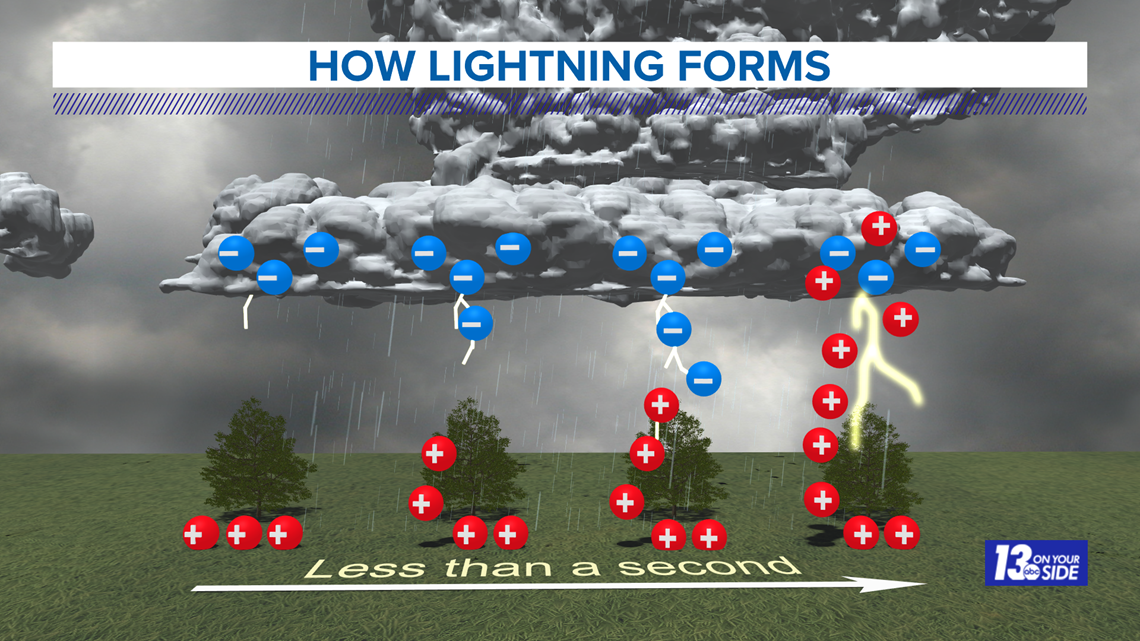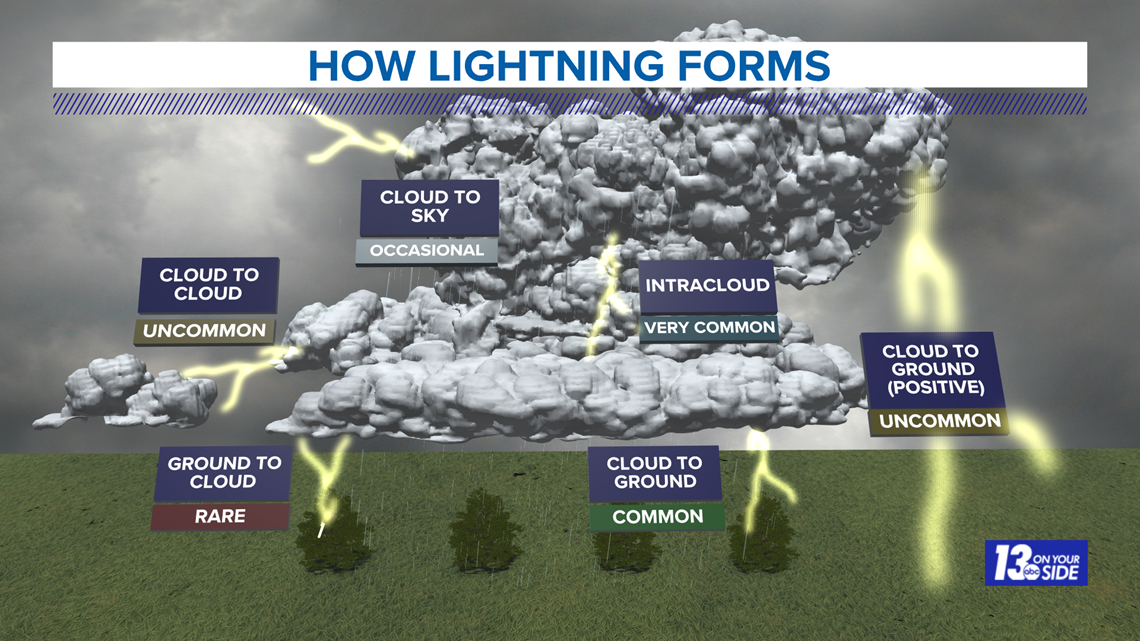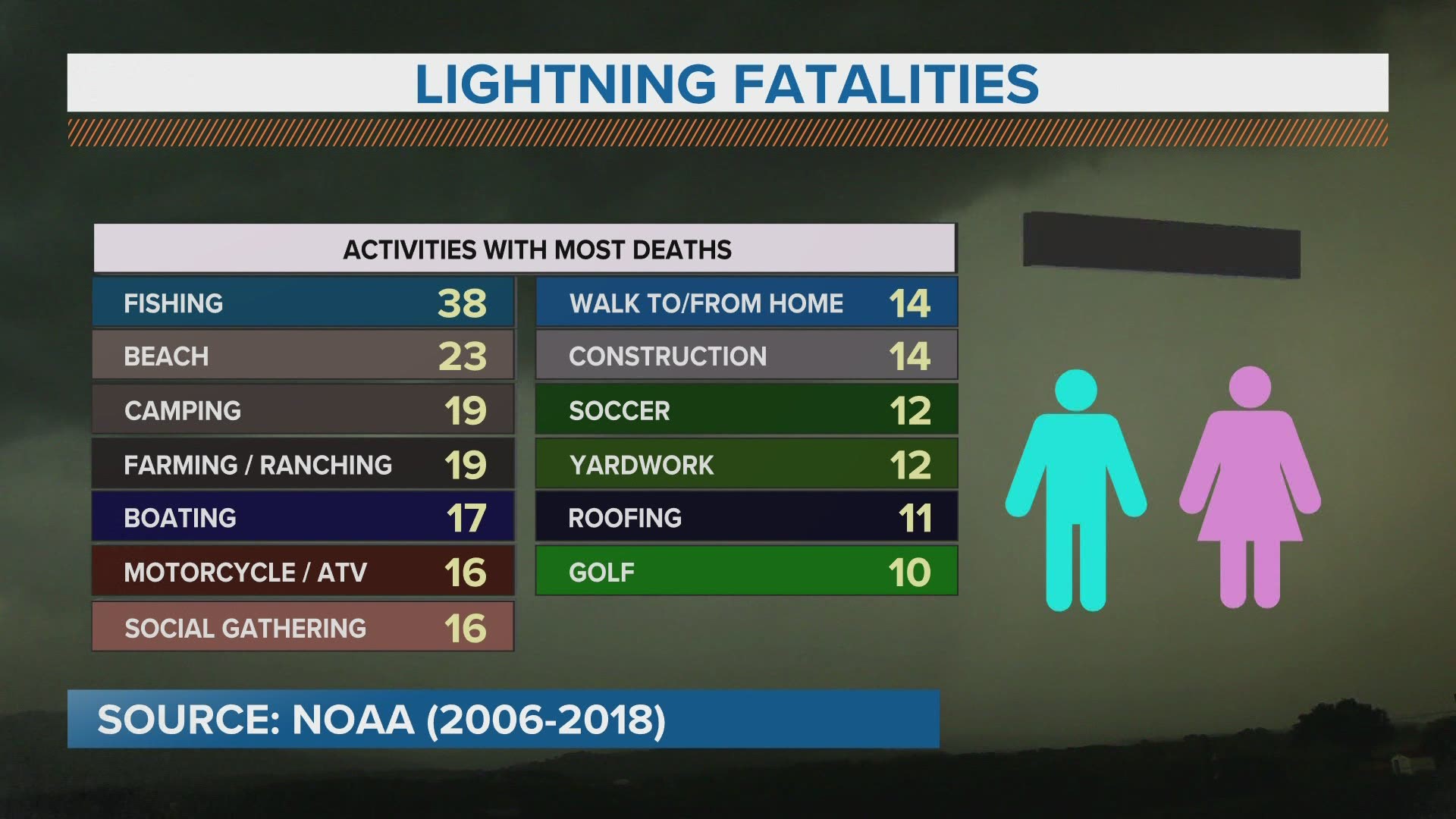GRAND RAPIDS, Mich — Warmer months and thunderstorms go hand-in-hand — how many times have you had to run inside on a summer afternoon while the skies roar and rain pours?
Lightning is one of the most common and underrated severe weather phenomenon. Whether you're inside or out, taking your safety seriously is key.
Lightning Formation
Thunderstorms build as warm, moist air converges and rises. As the air rises, it cools, and condenses to form a cloud.
Once clouds have formed towering cumulonimbus, turbulent air keeps ice crystals in the cloud flowing up and down, even colliding with other ice crystals. Over time, positive and negative charges separate: the positive flow toward the top of the cloud while the negative charges build close to the cloud base.


The ground is also positively charged and, as the saying goes, opposites attract. The negative charges flow down and the positive charges flow up. When the charges meet, a strong electrical current, or lightning, occurs. The entire exchange happens in under a second.
There are many different types of lightning. The most common include cloud-to-ground and intracloud.


Lightning Facts*
*Source: National Oceanic and Atmospheric Administration
- On average, nearly 50 people are killed by lightning each year in the United States and hundreds more are injured. 80% of deaths are men while only 20% are women.
- Lightning can strike the same place more than once. If an object is tall and isolated, it is more likely to be struck several times.
- Most lightning victims are in open areas or near a tree.
- Lightning strikes the United States about 25 million times a year.
- Lightning can heat its path through the air to five times hotter than the surface of the sun, to 500,000°F.
Safety Tips
Most deaths happen during outdoor activities near water, such as fishing and beach visits. Construction workers and farmers are at a higher risk of being struck by lightning.
If you are planning outdoor activities, check the forecast before you go to avoid inclement weather. The best phrase to remember is, "When Thunder Roars, Go Indoors."
Picnic shelters and dugouts are not safe structures to wait out a thunderstorm, so know where the nearest safe shelter is while enjoying the outdoors.
Once indoors, there are additional precautions to take:
-Avoid using electronics, such as computers and televisions.
-Corded phones should not be used but cellphones are safe.
-Avoid running water, such as taking a shower or bath, washing your hands or washing dishes.
-Stay away from windows and doors.
For more lightning information, head to NOAA Lightning Safety Tips and Resources.
Find more information about Severe Weather Awareness Week:
►Make it easy to keep up to date with more stories like this. Download the 13 ON YOUR SIDE app now.
Have a news tip? Email news@13onyourside.com, visit our Facebook page or Twitter. Subscribe to our YouTube channel.

